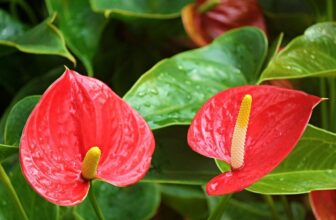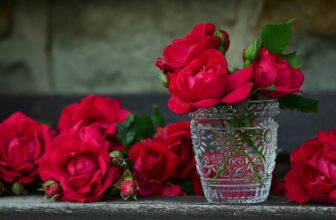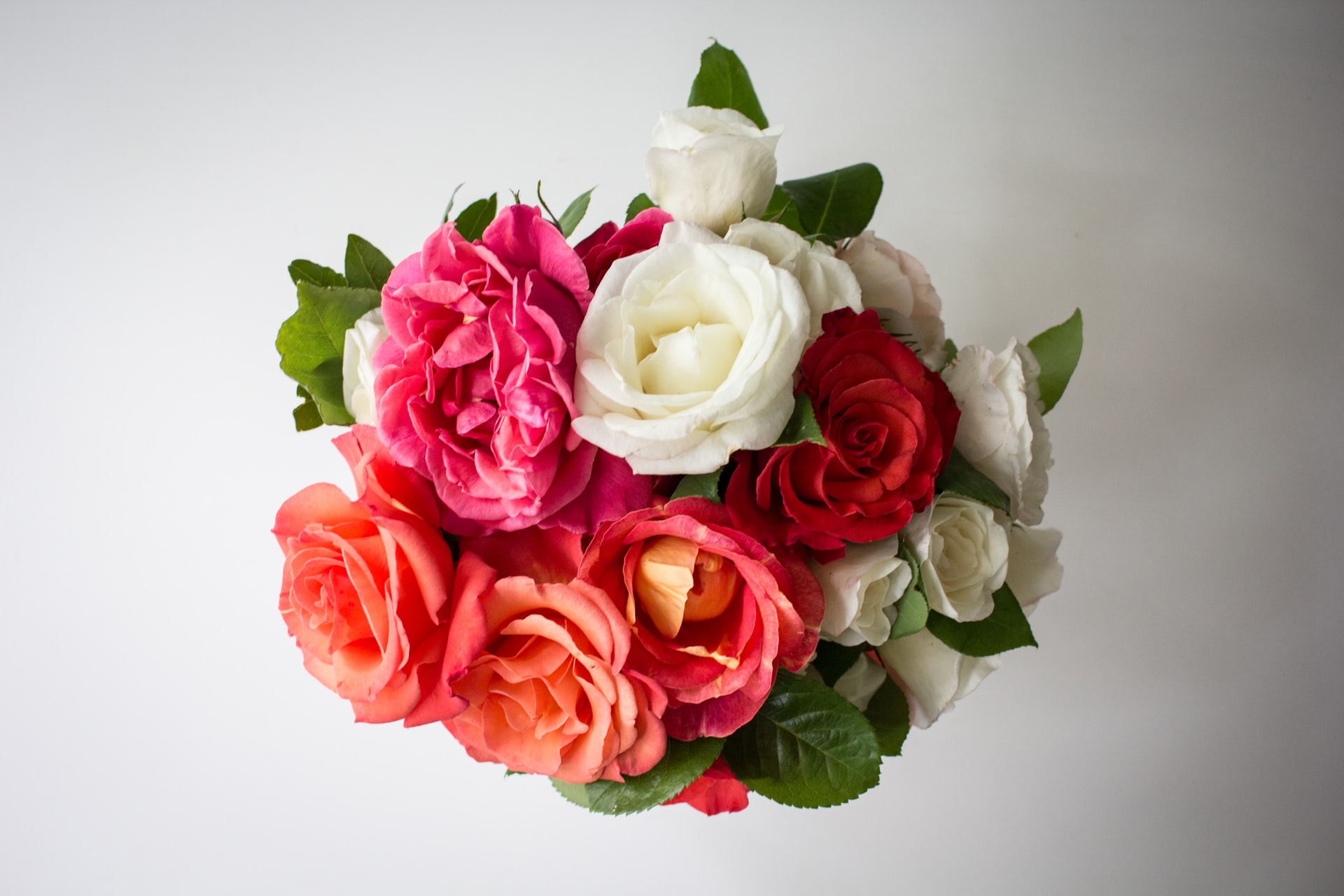
Table of Content
The rose family is one of the largest plant families that include over three hundred main species and tens of thousands of sub-cultivators. Each type varies slightly in hardiness, color, overall size, and resistance.
Knowing your roses properly will be useful as it will help you to select the most appropriate variety for your garden. In this article, we’ll take you through a list of different classifications of roses for you to choose from. Let’s go ahead and take a look.
Classification of Roses Based on Origin and Descent
Roses are often categorized into three groups depending on their order of origin and descent. These three groups include wild roses, old garden roses, and modern roses.
Type 1: Wild Roses / Species Roses
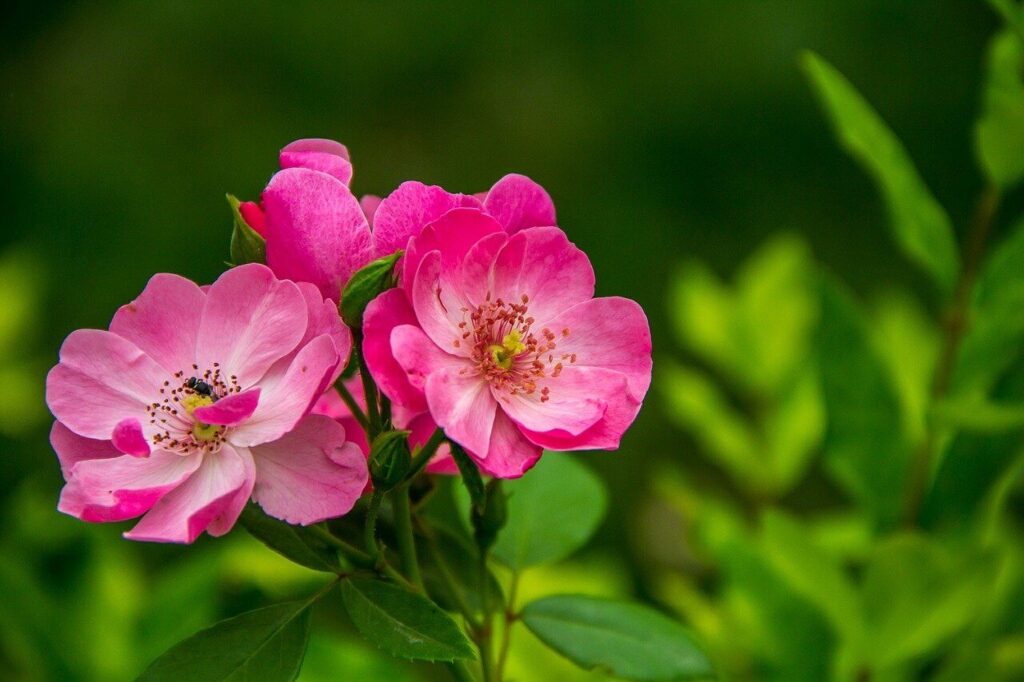
These are best described as “pure roses” due to their natural lineage and derivation. To elaborate, they don’t have a history of any cross-breeding and hybridization. Wild roses can be separated and identified from other rose types by looking at their flowers, stems, and the structure of the shrubs.
Typically, wild rose plants produce singular blooms with five-petals and have erect, non-flexible stems. Most plants grow from about 3 to 7 feet tall and are just as side. When planted in groups, they create beautiful, large natural groves. With their summer blooms and red to orange seed pods in the fall, wild roses can create breath-taking landscaping sceneries throughout the year.
Most wild roses are resilient plants that can tolerate harsh, poor weather, and growing conditions. They grow well in most soil types, including those in which other rose types would struggle.
Here’s a look at a few popular sub-varieties of wild roses:
1. Prairie Roses
These plants produce 1-4 small flowers per stem which are pink to white or even bi-colored. Their dark green foliage turns into a reddish-orange shade in the fall and they’re perfect for cottage gardens and meadows.
2. Beach Roses
Also known as “Japanese roses”, beach roses are extremely hardy plants that can survive in very poor growing conditions. They generate single pink blooms in the early summer and their hips are used to make jams and jellies.
3. Woods’ Roses
Woods’ rose shrubs can reach up to a height of 6 feet in their full growth. Their branches have a reddish hue and lesser thorns in the lower sections. They bloom in numerous shades of pink, starting from May to July every year.
4. Multiflora Roses
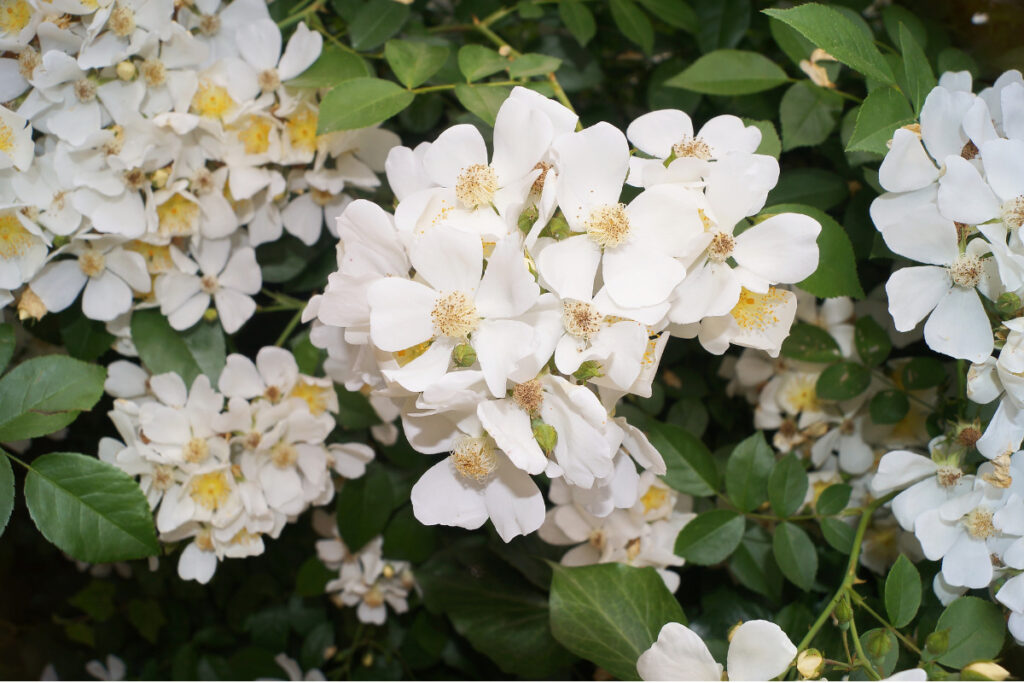
Also known as “Baby roses”, these plants have white or pink flowers. Though they’re often used for ornamental purposes, they fall under the category of invasive plants due to their super-fast growth rate and wide density.
5. Swamp Roses
Swamp rose shrubs grow up to around 7 feet in height and generate single or multi blooms that are quite small (around 1 to 2 inches in diameter). These flowers emit an enchanting fragrance and last for a long time before wilting out – around 6-8 eight weeks.
Type 2: Old Garden Roses/Heirloom Roses
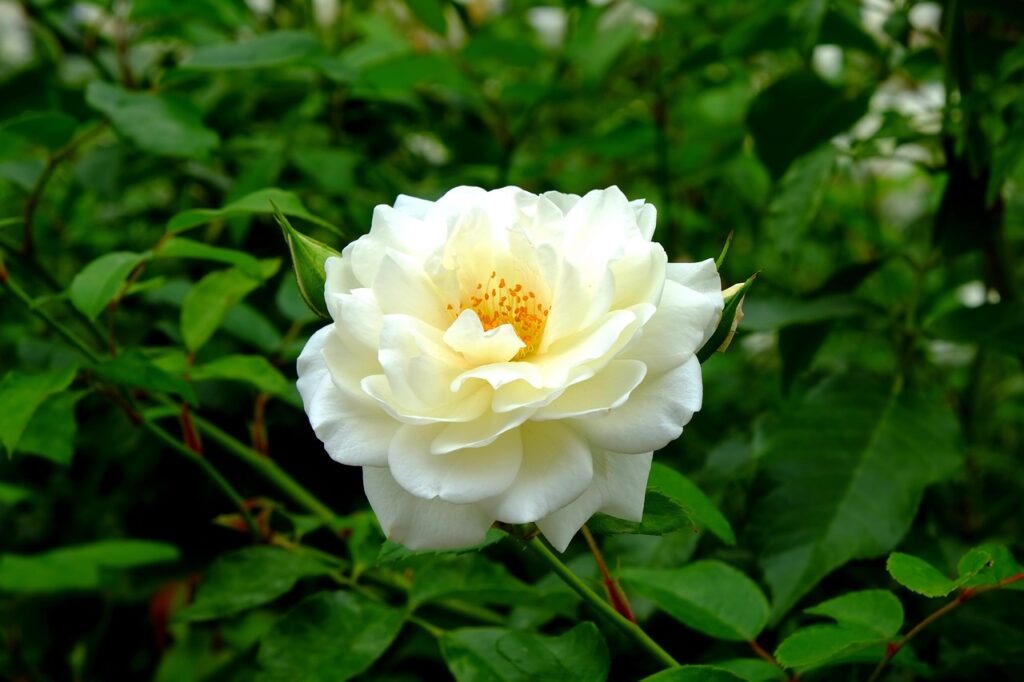
These are also called “antique” or “historic” roses as their history runs back over a hundred years (before 1867). Antique roses are generally tough, durable plants, and their flowers have a lustier fragrance than most of their modern descendants.
A great number of new varieties have been bred from historic roses over the years so about 80% of the modern rose species have come from these antique beauties.
The blooms of old garden roses only appear once in a year which can be anytime from late spring to summer. These flowers are adored for their boisterous size and huge selection of colors which includes red, white, pink, yellow, cream, and even purple.
Some popular sub-varieties of old garden roses include the following:
1. Bourbon Roses
These plants bloom repeatedly from late spring until the winter frost sets in. With their glistening leaves and beautiful flowers that come in white, scarlet, or pink, bourbon roses are ideal to be grown on any garden structure.
2. Noisette Roses
Named after the two French nurserymen Louise and Phillipe Noisette who first discovered them, Noisette roses were born as a hybrid plant species of roses. Noisette rose varieties bloom in several shapes, colors, and sizes from summer to autumn.
3. Alba Roses
These have greyish- green leaves that are contrasted against beautiful blush pink to white blossoms. Also known as ‘tree roses”, these are known as low- maintenance plants that can be grown with minimum care and attention.
4. Damask Roses
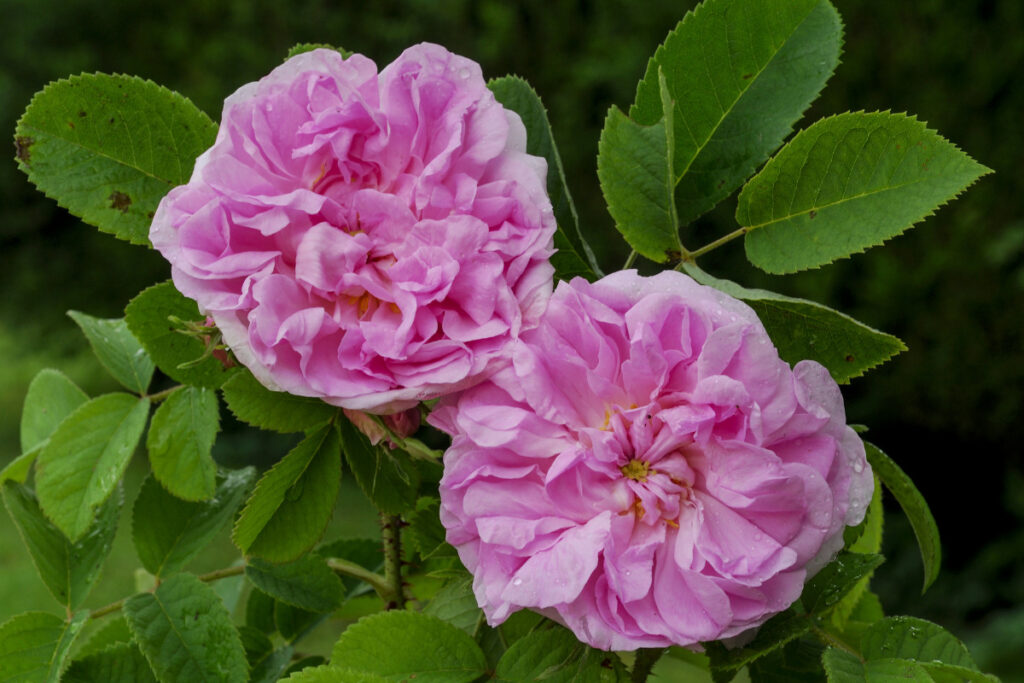
These are called by several names including “Bulgarian roses, Arab roses, and Turkish roses”. They have a higher commercial value as they’re often used to make numerous aromatic oils and perfumes in many countries around the world.
5. Ayrshire Roses
These hybrids can be grown as both climbers and shrubs due to their thin, long stems. Their flowers mostly come in white to pink colors which appear from late spring to early summer in semi-double form.
Type 3: Modern Roses
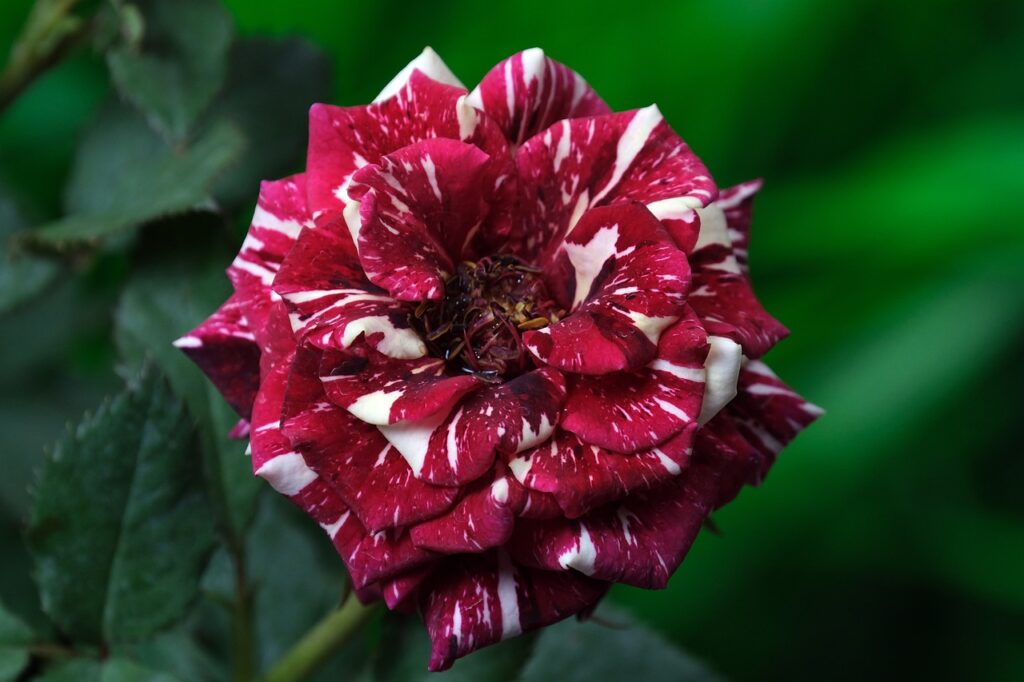
These roses are the most well-known as they’re the most common variety in today’s gardens. All the rose varieties that were found after 1867 belong to this category.
In comparison to old garden roses, these plants offer a continuous blooming experience that comes year-around. Florists and homeowners love having modern roses in their gardens as they make excellent cut flowers with a considerably long vase life-span.
However, unlike historic roses, most modern roses don’t have strong scented flowers and they’re prone to getting affected by diseases and poor growing environments. Due to this reason, plant experts today are backcrossing modern roses with old garden rose varieties to produce new species that have a stronger fragrance and a higher ability of disease resistance.
1. Hybrid Tea Roses
These plants mostly produce one bloom per stem with around 30 – 50 petals. Most shrubs are bushy with a height of 3 – 6 feet and the flowers are popular cut flowers among florists due to their intensely colorful and showy blossoms.
2. Miniature Roses
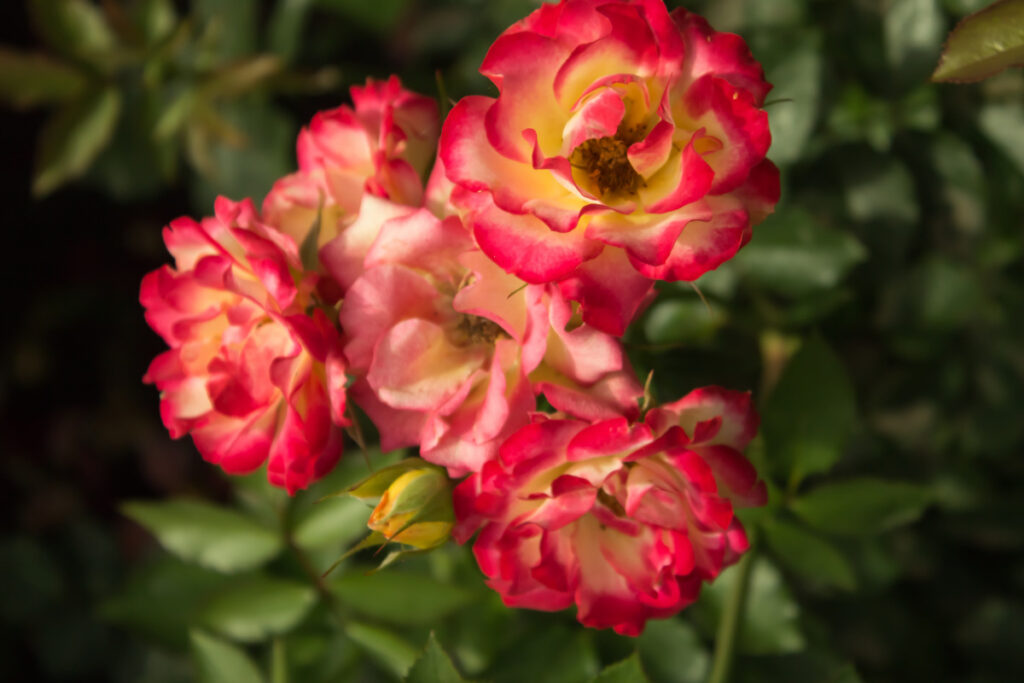
As the name suggests, “miniature roses” are the smaller versions of their larger fellow plants. They’re available in a wide range of colors and most of have the ability to produce flowers continuously.
3. Grandiflora Roses
Grandiflora rose shrubs are often very tall and their flowers appear in clusters rather than on their own. Each cluster consists of around 3 – 5 blooms and have a bluish-green foliage that grows up to 1-8 feet and spread to around 3 feet in width.
4. English Roses
These can be grown in diverse gardening settings such as hedges, containers, beds, and borders. English roses are famous for their enchanting scent and lush flowers that bloom in various colors like yellow, orange, purple, white, and pink.
5. Floribunda Roses
Somewhat similar to grandiflora roses, the floribunda roses also present a large cluster of flowers. They’re among the rose varieties with the longest lasting blooms and have a life-span of more than 6 – 7 weeks.
Classification of Roses Based on Growth Structure and Use
Type 1: Shrub Roses
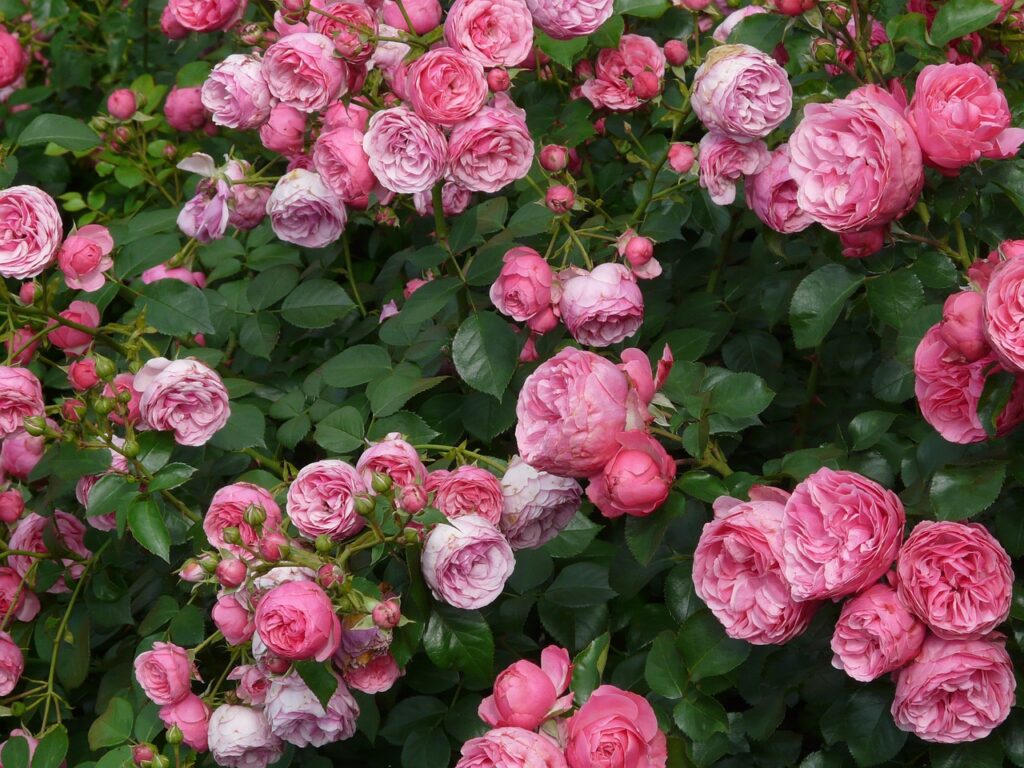
Most shrub roses are created by crossing old garden roses with modern roses. They’re known as reliable, tough, and disease resistant plants that are perfect for growing individually in garden borders. Shrub roses tend to grow wide and large with a spread of 5 – 15 feet in every direction. They are heavy bloomers that produce small flowers in great quantities repeatedly or continuously throughout the year.
Some commonly grown types of shrub roses include the following.
1.Snow White
These plants have mildly scented white flowers that bloom in semi or fully double form. Discovered in Netherland, snow white roses have a cupped shape and are best grown in USDA zones 6b-9b.
2. Fireworks
This is a mini-floral rose variety that produces eye-catching flowers with a blend of colors of deep red, orange, or yellow. The small blossoms are about 1.5 inches in diameter with an average amount of 35 petals per each flower.
3. Fontaine
This type of rose is designed to produce an abundance of large red flowers with glossy, velvety petals. They have an erect growth with a height of 120-150 cm which makes them ideal for borders, beds, and containers.
4. Romance
These are deciduous shrubs with toothed and bushy dark green foliage. They grow upright and produce light scented, dark pink flowers starting from early summer into autumn.
5. Spring Gold
These award winning roses have strong scented blossoms that appear in huge clusters in late spring or summer. The flowers have a charming pale creamy-yellow shade that’s beautifully contrasted against light green foliage.
Type 2: Ground Cover Roses / Landscape Roses
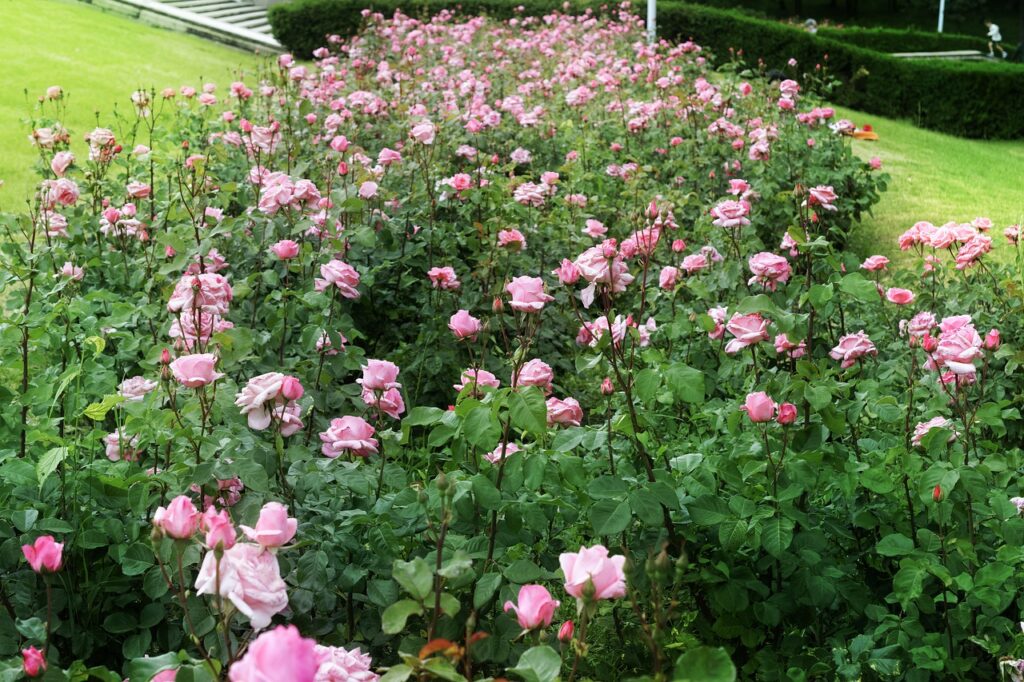
This is another elegant rose variety with vibrant colors and lovely fragrances. Generally ground cover roses are very hardy and easy to grow because these beauties are both disease and pest resistant. These rose plants can reach up to a height of 1 – 3 feet.
Landscape roses are perfect to be grown as filling or companion plants since they spread out and grow high. They’re continuous bloomers and are ideal for covering banks, slopes, or rocky areas. These roses are ideal easy growers for beginner gardeners.
1. Miscellaneous Roses
Miscellaneous rose is any species of shrub rose that can be grown as a ground cover due to its rambling nature.
2. Drift Roses
These plants are naturally dwarfed, reaching up to a height of 1.5 feet and a width of 2-3 feet. Drift roses are known for their disease-resistant foliage and the ability to produce flowers continuously.
3. Meidiland Roses
There are several sub-cultivators of meidiland roses that can be used in numerous landscaping purposes. They’re aggressive growers, which makes them perfect for covering vast spaces of ground in your garden.
4. Blanket Roses
Unlike meidiland roses, these plants have a slightly restrained growth. However, they also have the ability to bloom continuously in ideal growing conditions.
5. Flower Carpet Roses
Flower carpet roses grow more like mounds rather than spreading out. Well-established flower carpet roses are known for their draught-tolerance ability and make ideal ground covers for warmer climates.
Type 3: Climbing Roses / Rambler Roses
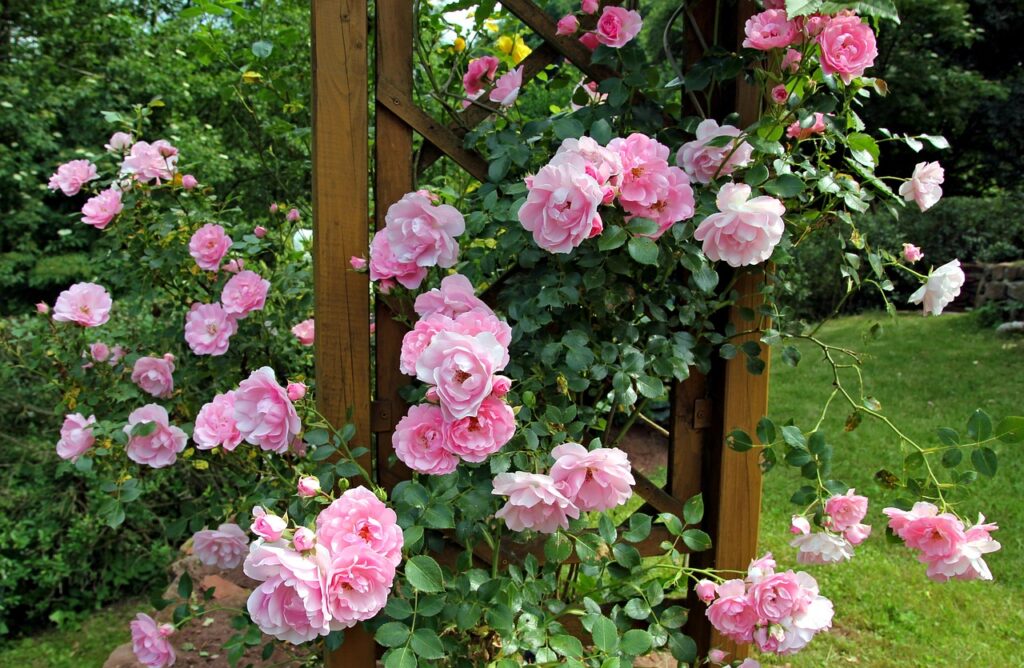
Climbing roses can be identified by their long, curving stems and are used to cover archways, garden fences, pergolas, or walls. The stems can grow up to a full length of 15 feet. Generally, climbing roses produce more flowers when they’re grown horizontally instead of vertically like most other rose varieties.
Climbing roses are repeat bloomers with beautiful large fragrant blossoms, producing up to 20 flowers per one stem. These plants are generally very healthy and disease resistant, with the ability to thrive in partial shade and poor soil. As a result, they’re low maintenance plants that require very little care.
1. Compassion Roses
This is a sub-cultivator of hybrid-tea roses with sweet scented, large coral pink to light pink flowers. It has dark green leaves and are categorized as a large climber with a height of 4.5 M in its full growth.
2. Gertrude Jekyll Roses
This is an English rose shrub species that’s bred by famous rose breeder David Austin who named it after garden designer Gertrude Jekyll. Their flowers have a lovely bright pink color and they appear repeatedly once the blooming season starts.
3. Iceberg Roses
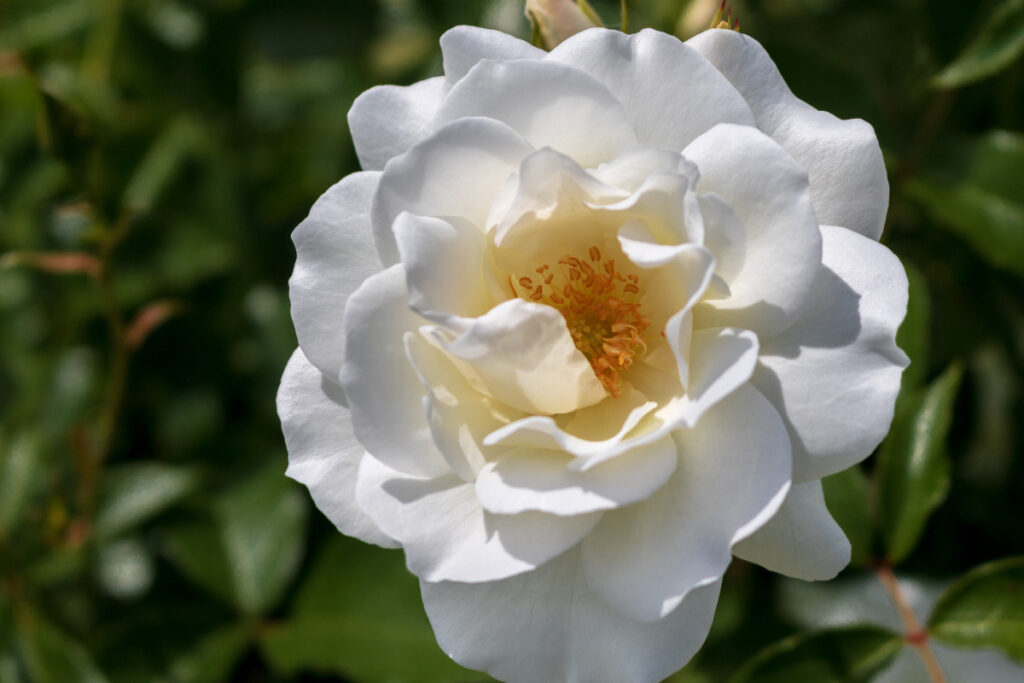
Iceberg rose plants are medium-sized climbers that are about 110 cm tall and 90 cm wide. They produce pure-white blossoms in late summer which sometimes have a slight pinkish tint to them.
4. Parkdirektor Riggers
These are extremely tall climbers that can grow up to a height around 5.5 M. Their deepcrimson-colored flowers have a velvety appearance which is breath-taking against the dark green glistening foliage.
5. Wollerton Old Hall Roses
This is another well-known breeding species of David Austin which was introduced in the year of 2011. Wollerton old hall roses have a buttery light yellow hue with an average size of 3.75 inches in diameter.
Type 4: Hedge Roses
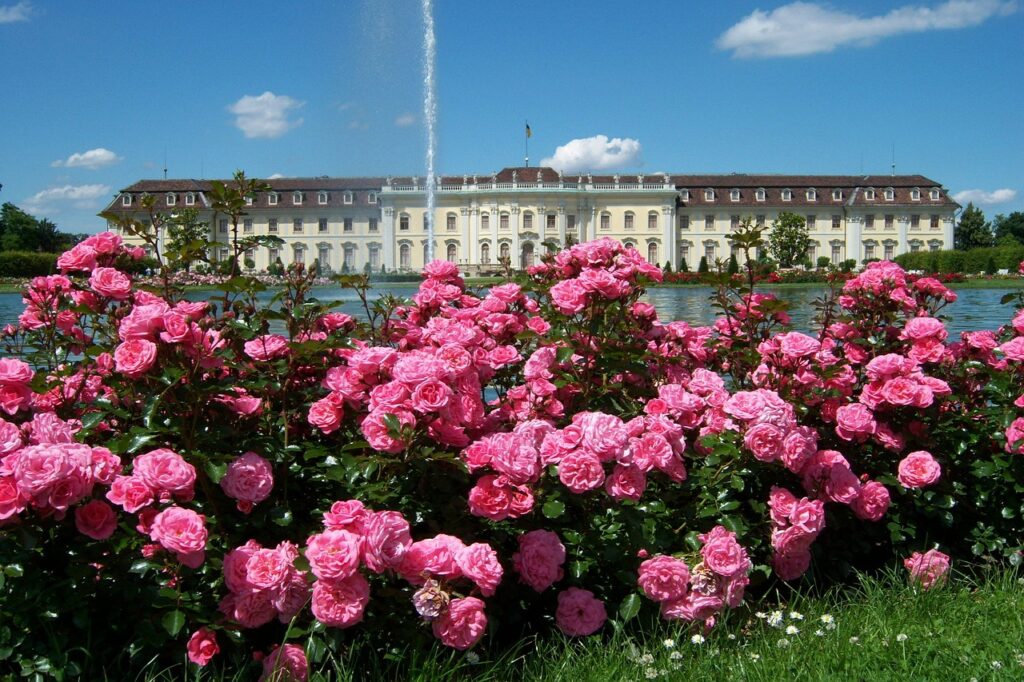
As the name suggests, “Hedge roses” are ideal for hedges and borders in your garden. Together, their glossy foliage, brightly colored flowers, and golden rose fruits create the perfect type of natural screening and decoration anywhere.
The way you plant and arrange hedge roses in your garden should be decided on the specific type you choose. For example, depending on the species, the space between each plant can be varying from 18 inches to 3 feet apart.
1.Burnet Rose
This is a wild rose species that has hairless leaves and purple seed pods. Their stems are full of thorns and they generate pinkish-white flowers that have five petals. They bloom from spring all through to summer.
2. China Rose
Also known as “Bengal Rose”, this plant is native to several East Asian regions. The flowers appear in pink to red shades and the plants resemble thickets with their height and spread of 1-2 meters.
3. Ballerina Rose
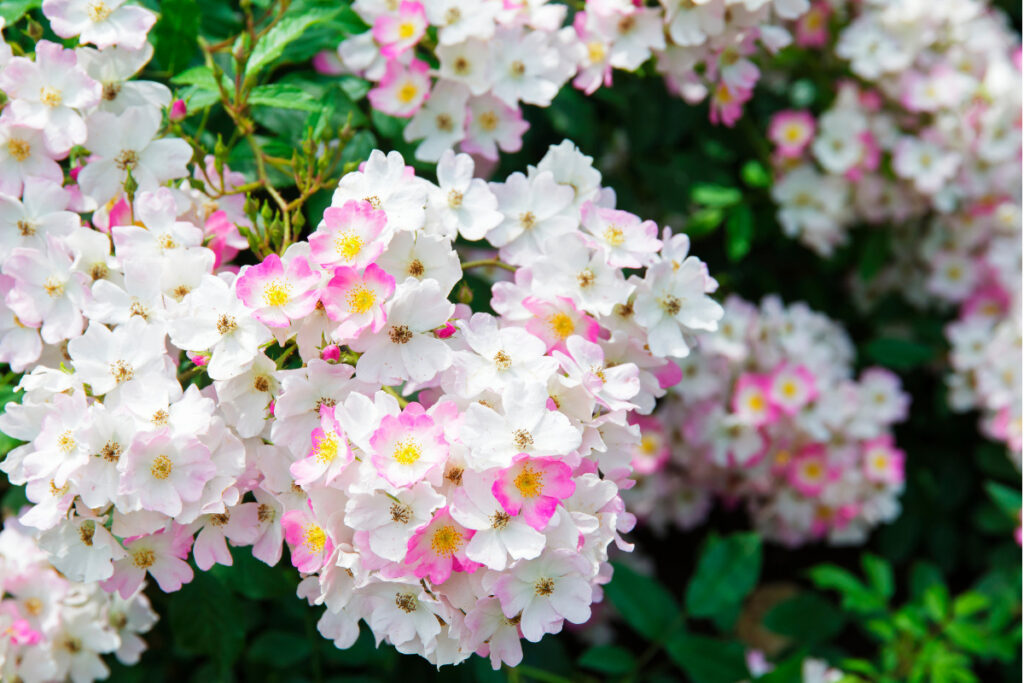
This variety is a free-flowering rose breed that produces abundant soft pink blossoms summer to fall. The foliage has a light green color and known for being resilient against many diseases.
4. Redleaf Rose
Redleaf roses are known for their unique foliage that comes in a splash of colors including bluish, greyish, and silvery green with an overtone of purple and burgundy. They have deep pink flowers that appear in spring to early summer.
5. Old Blush
These rose blooms have a delicious, fruity fragrance with a dainty pink color. They’re medium shrubs about 125 cm tall and 90 cm wide which makes them an excellent choice for hedges. They can also be grown in various soil types.
The Take-Away
Roses have a long history of cultivation that spreads to every corner of the globe. They come in plenty of colors, varieties, and sizes so you’re bound to find one or more that would be perfect for your garden!



